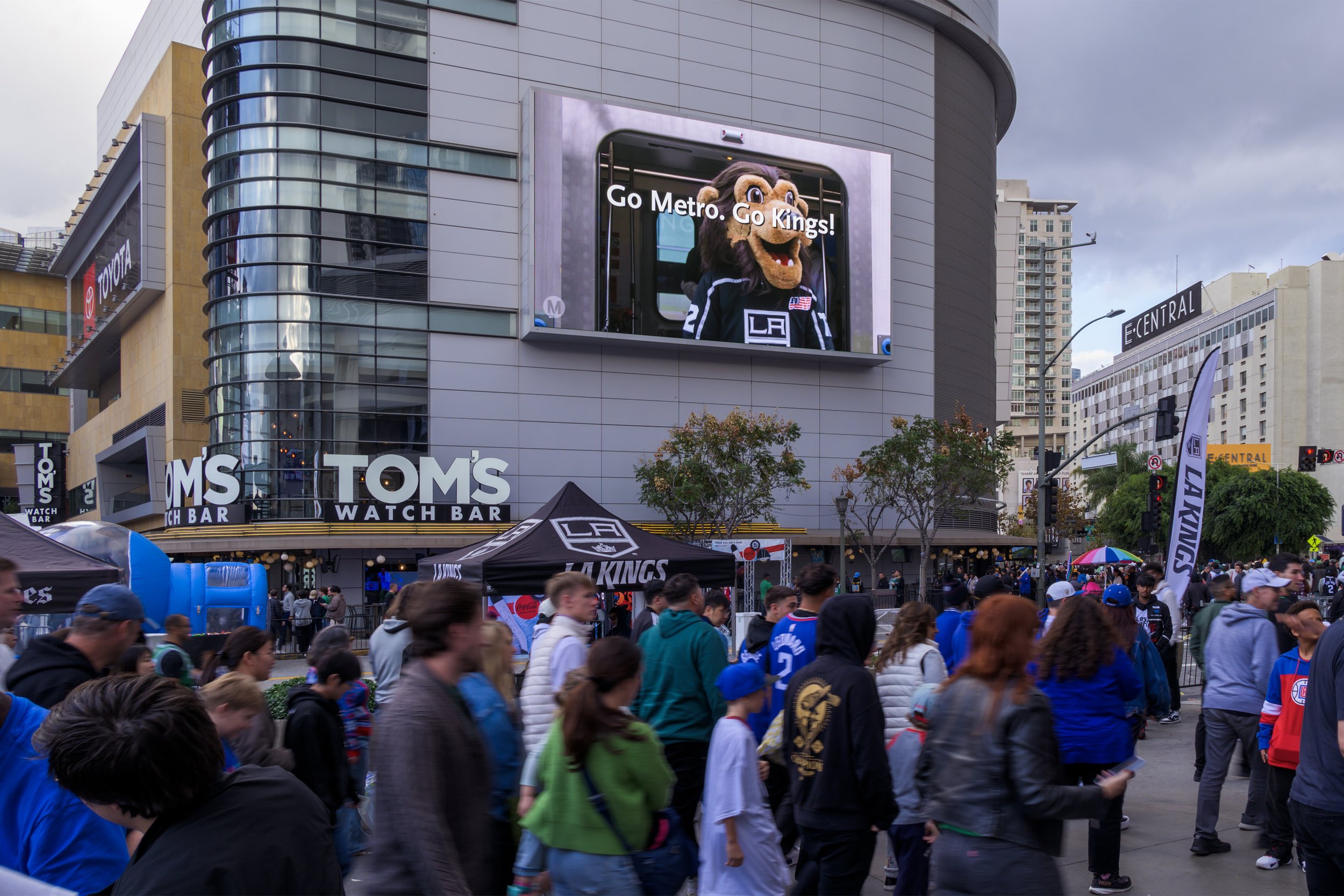How Brands Can Use Out of Home Hyperlocal Campaigns to Cultivate Brand Loyalty and Cultural Relevance
88% of consumers say they strongly value authenticity. Hyperlocal campaigns help brands build trust and connection by aligning with cultural moments and local audiences.
Hyperlocal campaigns are quickly emerging as a powerful marketing tool. Why? Because with an overwhelming amount of choices, consumers tend to trust recommendations that feel personal, local, and relevant to their community. Today’s consumers are living in what Inc. has coined The Age of Brand Authenticity, favoring brands that demonstrate high cultural awareness and genuine consumer engagement. Hyperlocal out of home (OOH) campaigns take this one step further by reaching consumers in specific areas with localized creative campaigns, allowing brands to speak to audiences on a deeper and more authentic level by considering community nuances, local occasions, and what's important to the community they inhabit.
Modern consumers are choosing brands that align with their interests; in fact, the most impactful campaigns move beyond visibility and into cultural resonance, positioning brands as part of their audience’s environment rather than an outside presence. Cultural relevance has always been a driving factor in ad efficacy, and by aligning themselves with a popular event, brands, in turn, can be relevant by association. Brands should focus on celebrating the moment rather than self-promotion to create lasting emotional connections with the audience. Effective campaigns reflect real-time happenings, such as Modelo’s MLS Cup ad congratulating LA Galaxy for winning the championship, turning fleeting events into powerful brand statements. There are many big events slated over the coming months, from the NBA finals to Coachella, and with these iconic events come big crowds, high-spending tourists and opportunities for brands to reach their audience over a common interest. When brands position themselves as part of an experience rather than the focal point, they foster natural relevance, authenticity, and trust.
When planning a hyperlocal OOH campaign, brands must consider who their audience is, where they physically spend their time, and what motivates and interests them. Finding the right strategic location is vital here. Unlike traditional media, OOH advertising has the advantage of being rooted in the physical world, with billboards situated in the spaces where people live, work, and play, so make an effort to visit every location you're buying in person or review its surroundings on Google Street View. OOH advertising isn’t just about visibility - it’s about being where the community is, in every sense of the word. A billboard in a commuter-heavy area might serve a different purpose than one placed near an entertainment venue, and this should shape creative execution.
When planning creative content, it’s important that brands move beyond the generic and instead consider their core demographic’s culture, language, and habits to create more impactful messaging. We’re seeing more and more advertisers and agencies push the envelope with content - it can be as simple as a creative triggered by an event or one that celebrates the locality. A strong example of this is CALPAK’s hyperlocal campaign in Los Angeles, which integrated its travel accessories into the narrative of modern exploration. The campaign’s bold visuals resonated with the city’s diverse audience, making CALPAK feel like a natural part of the urban traveler’s lifestyle rather than an outsider attempting to sell a product. Beyond OOH, the campaign sparked organic social media engagement, amplifying its reach and reinforcing CALPAK’s relevance to its target audience.
What’s really exciting about hyperlocal campaigns is that they tend to be highly shareable. Metro has mastered this approach, utilizing digital assets in Downtown Los Angeles to quickly respond to real-world events. The organization’s recent campaigns ranged from an LA Kings mascot ad promoting the public transport service to and from hockey games, to a Sabrina Carpenter-themed Please, Please, Please advertisement timed for her show at Crypto.com Arena. These activations encouraged social media sharing, created memorable impressions, and had high localized relevance. Even better, by being placed near both a major event venue and a Metro entrance, the campaigns had the opportunity to directly influence consumer behavior.
Similarly, Skims capitalized on hyperlocal OOH by placing an ad campaign featuring ambassador and singer SZA on digital displays outside of KIA Forum, coinciding with the night of her concert. This strategic placement ensured visibility among the exact audience most likely to engage with the brand, creating both hype and shareable photo opportunities.
Aligning campaigns with current events or community celebrations ensures the messaging feels timely and meaningful. Some of the most successful campaigns are ones that come together quickly in response to hyperlocal happenings and take advantage of what's trending in the cultural zeitgeist, as well as local events. What can be challenging for brands looking to piggyback off timely trends is the rapid news cycle we’re seeing in 2025. Speed and agility are important here and one of the best things we can do in the digital era is simply stay nimble. With rapid advances in technology and changing consumer needs, it is essential for brands to listen and respond quickly.

